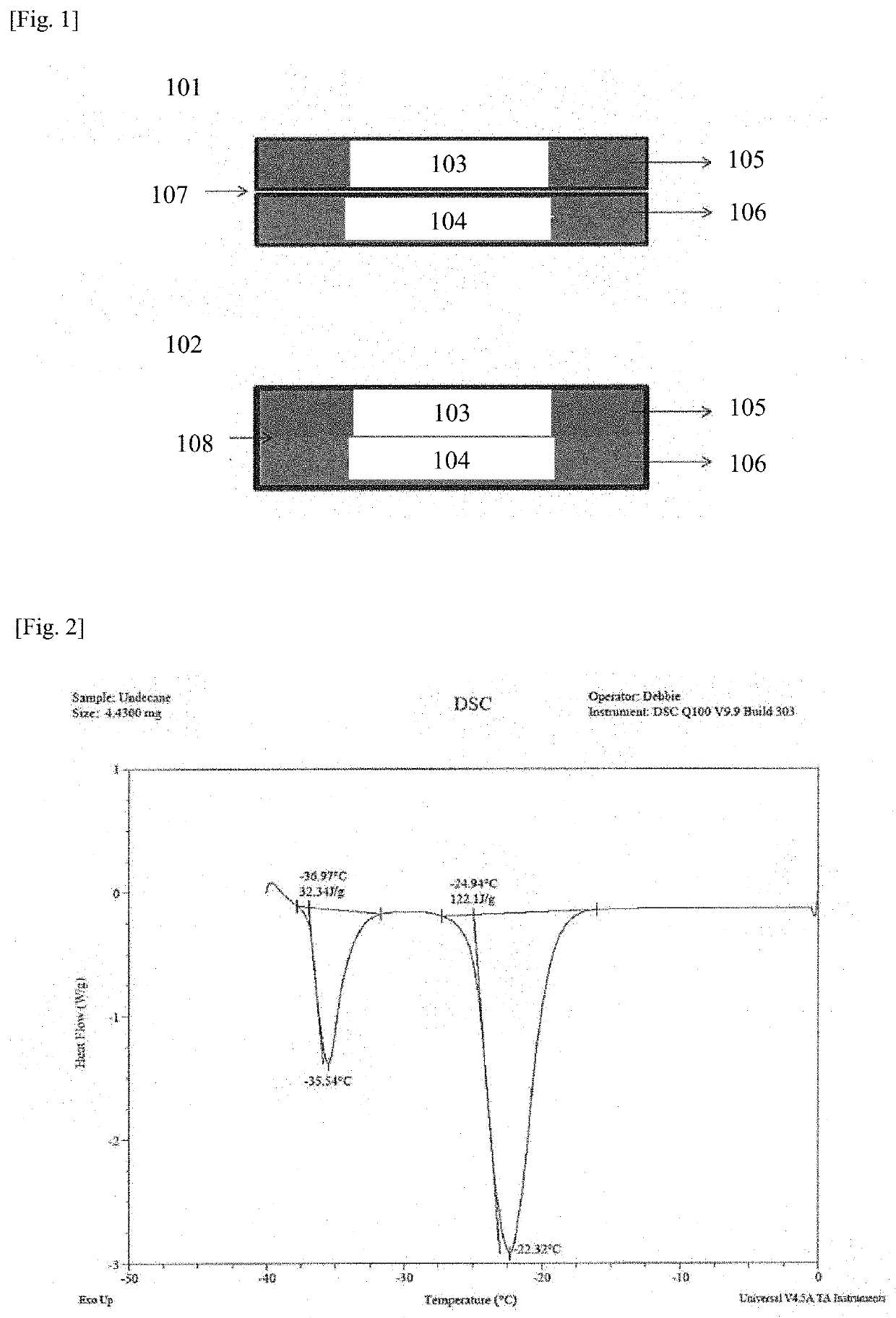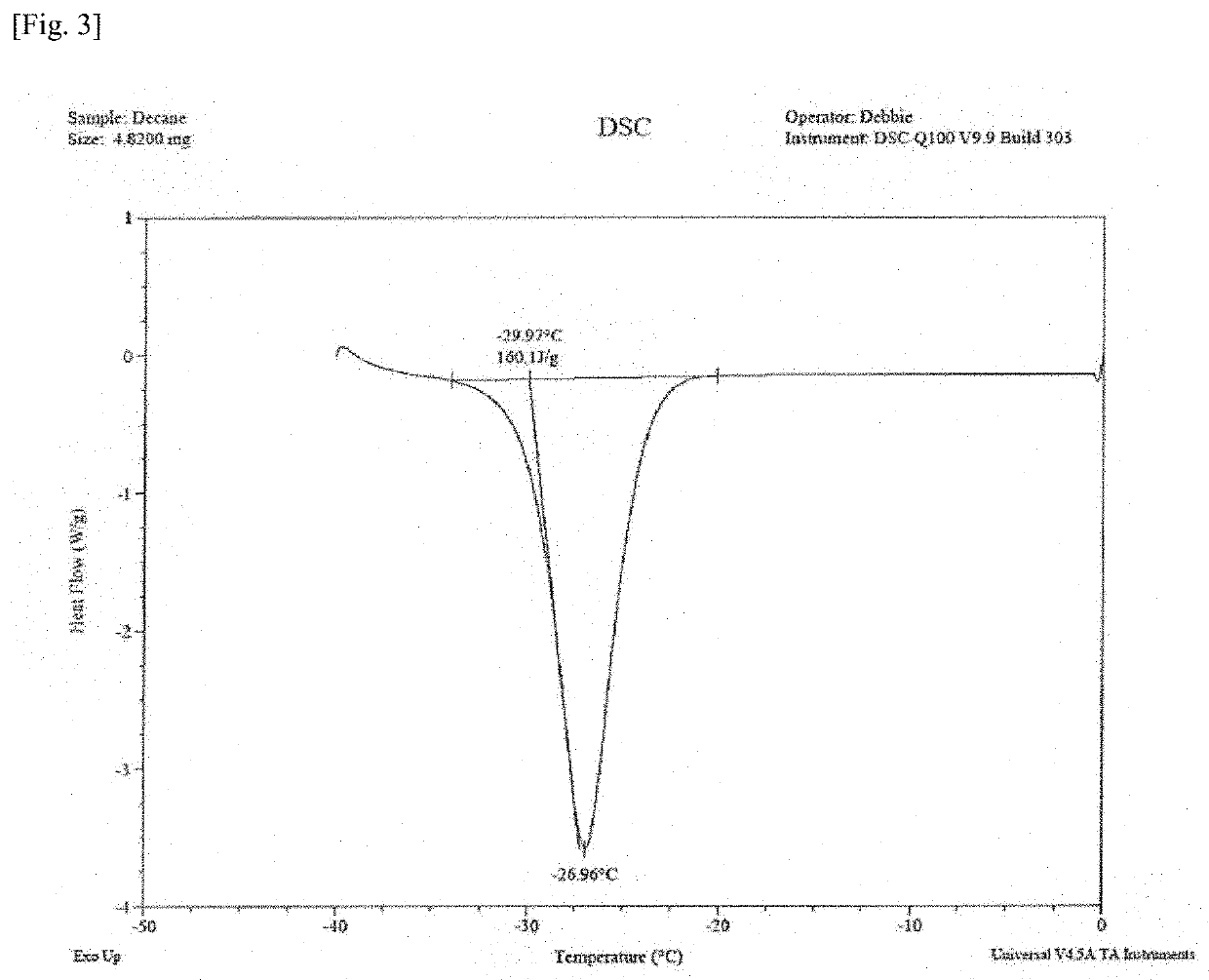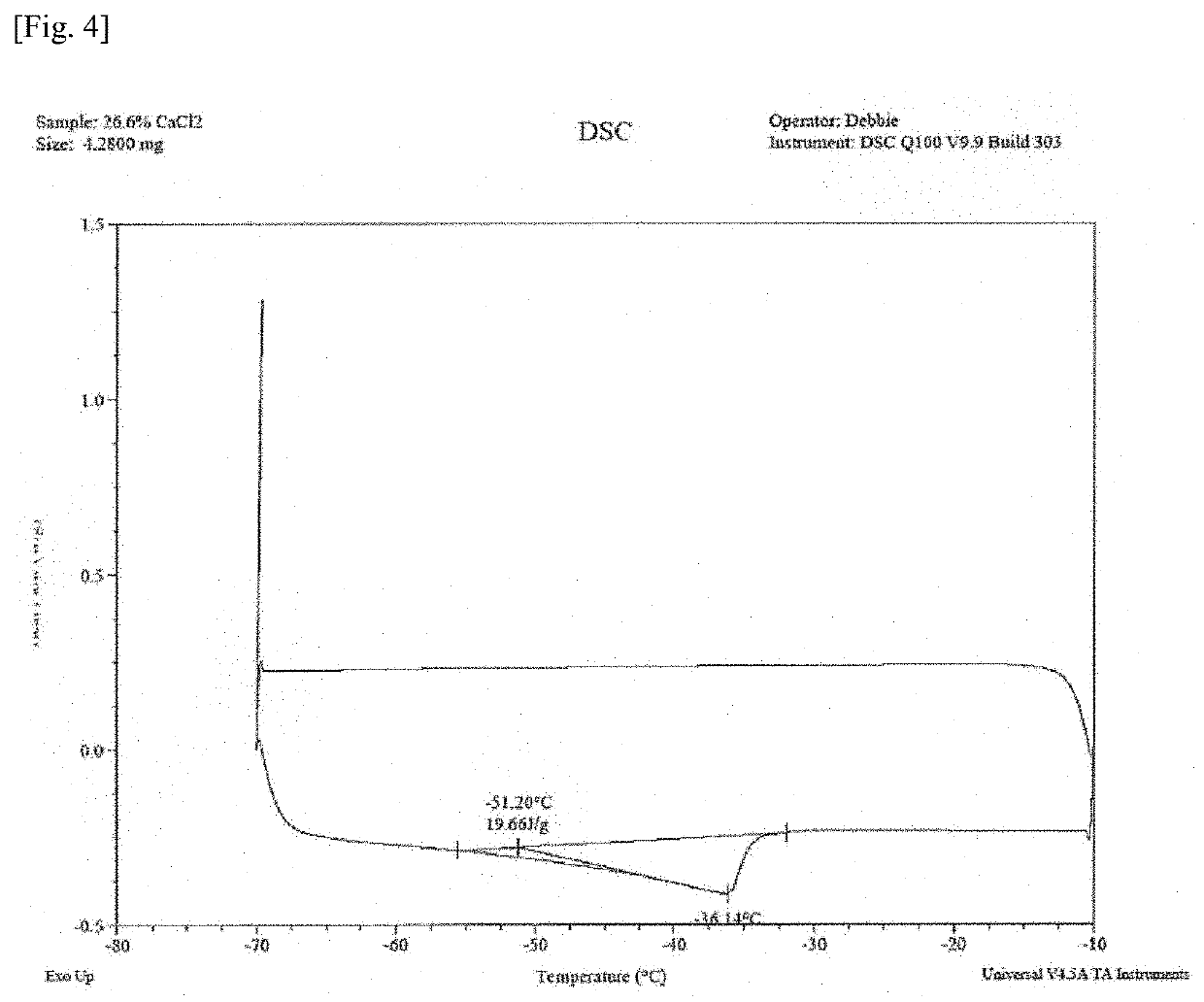Thermal Control System
- Summary
- Abstract
- Description
- Claims
- Application Information
AI Technical Summary
Benefits of technology
Problems solved by technology
Method used
Image
Examples
example 1
and Methods
[0174]NaCl, MgC12, KCl, CaCl2), Na2SO4, MgSO4, K2SO4, CaSO4, NaNO3, Mg(NO3)2, KNOB, and Ca(NO3)2 were purchased from Sigma Aldrich (St. Paul, Minneapolis, USA) and fatty acids including carboxylic acids of the short-(C2 to C12) and long-(C13 to C24) alkyl chains were purchased from TCI (Tokyo, Japan). Waxes of short-(C6 to C12) and long-(C13 to C24) chained hydrocarbons were purchased from Alfa Aesar (Ward Hill, Mass., USA).
[0175]Differential Scanning calorimetry (DSC)
[0176]Photo differential scanning calorimeter (DSC Q100), TA instruments was used to measure phase change temperature (e.g. melting point) and heat capacity.
[0177]DSC measurements were taken as follows:[0178]measure out sample between 4 mg-7 mg and place in DSC pan[0179]seal pan with the sample encapsulating press[0180]place sealed pan into machine[0181]key in weight to programme, temperature range (−60° C. to −10° C.), number of cycles (3)[0182]run sample[0183]analyse generated data to get melting point and...
example 2
ons
Inorganic Phase Change Material (PCM) Formulation
[0199]In order to enhance the performance of overall cool box system, an inorganic-based phase change material was developed. It comprises an aqueous solution of one or two or multiple salts and different functional additives. The salt concentration was in the range of 10-30% using salts including NaCl, MgC12, KCl, CaCl2), Na2SO4, MgSO4, K2SO4, CaSO4, NaNO3, Mg(NO3)2, KNOB, and Ca(NO3)2. The functional additives included carbon-based fibers, silica-based nano-sized or micro-sized materials, such as fumed silica, aerogel, glass spheres or others at 0.1%-3% concentration. These ingredients were mixed at different ratios to tune the working temperature or working duration of the phase change material.
[0200]In an exemplary formulation, the respective weight of each component as indicated below was mixed and a mechanical stirrer was used to mix the mixture until it was homogeneously blended.[0201]Water 100 g[0202]NaCl 5 g[0203]CaCl2) 20...
example 3
Device
[0214]The above PCM mixtures were transferred to a container or bag and tightly sealed. The container or bag was subsequently placed in a freezer which was set to a temperature based on the working temperature range of the PCM. For example, for a working temperature range of −10° C., and if the freezing point of the PCM as tested by DSC (see below) was around −11° C. to −9° C., then the PCM was placed in a −20° C. freezer to freeze.
[0215]An appropriate number of containers or bags of frozen PCM were placed in a prototype test box, and the box was closed for testing in a temperature range of:[0216]−24° C. to −20° C.; or[0217]−18° C.
[0218]These testing temperatures were selected based on the temperature ranges that are commonly used in grocery and pharmaceutical logistics.
[0219]To achieve better performance, a combination of different phase change material (PCM) formulations can be used, either physically mixed or packed separately as seen in FIG. 1. In FIG. 1, 101 refers to an ...
PUM
| Property | Measurement | Unit |
|---|---|---|
| Temperature | aaaaa | aaaaa |
| Thickness | aaaaa | aaaaa |
| Thickness | aaaaa | aaaaa |
Abstract
Description
Claims
Application Information
 Login to View More
Login to View More - R&D
- Intellectual Property
- Life Sciences
- Materials
- Tech Scout
- Unparalleled Data Quality
- Higher Quality Content
- 60% Fewer Hallucinations
Browse by: Latest US Patents, China's latest patents, Technical Efficacy Thesaurus, Application Domain, Technology Topic, Popular Technical Reports.
© 2025 PatSnap. All rights reserved.Legal|Privacy policy|Modern Slavery Act Transparency Statement|Sitemap|About US| Contact US: help@patsnap.com



